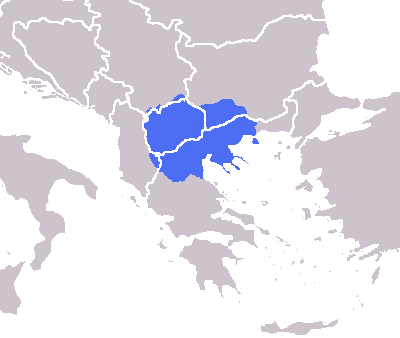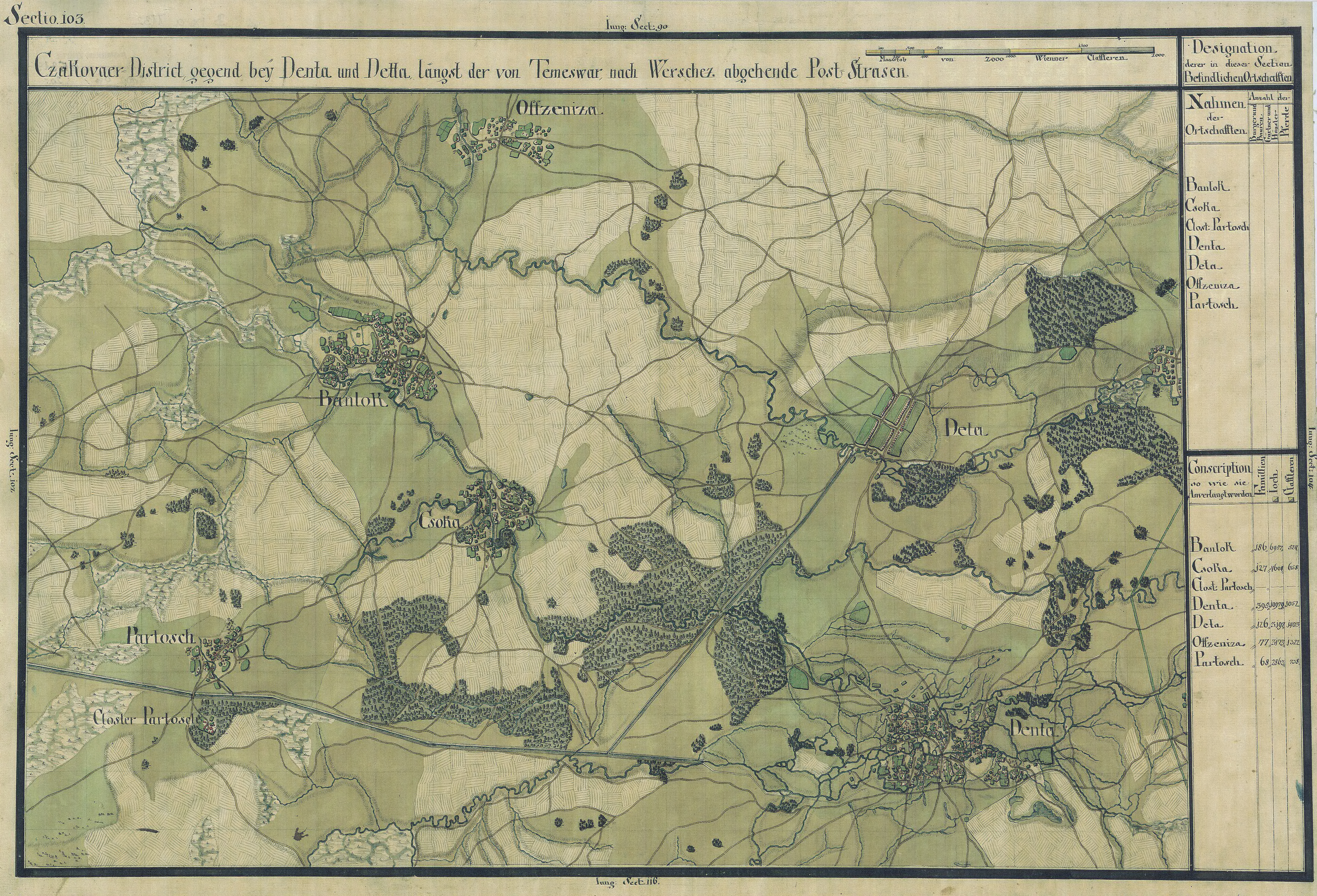|
Dragomirovo, Veliko Tarnovo Province
Dragomirovo ( bg, Драгомирово) is a village in central northern Bulgaria, part of Svishtov Municipality, Veliko Tarnovo Province. As of January 2006, it has a population of 864 and the mayor is Hristo Yordanov of the National Movement Simeon II. Dragomirovo was founded following the Liberation of Bulgaria in 1878 as part of the earliest wave of Roman Catholic Banat Bulgarian return from the Banat (in Austria-Hungary) to Bulgaria, and was settled by 141 households from Stár Bišnov and one from Brešća, as well as by another, culturally different group of Roman Catholic Bulgarians: "Bucharesters" from Popești-Leordeni and Cioplea in Wallachia, Romania. Besides the Catholics, Dragomirovo also has a large and varied Bulgarian Orthodox population, which consists of former emigrants who had returned from Romania, as well as Bulgarian settlers from the Balkan Mountains and other inland regions, and Bulgarian refugees from Vardar Macedonia who arrived in 1922. As a resul ... [...More Info...] [...Related Items...] OR: [Wikipedia] [Google] [Baidu] |
Bulgaria
Bulgaria (; bg, България, Bǎlgariya), officially the Republic of Bulgaria,, ) is a country in Southeast Europe. It is situated on the eastern flank of the Balkans, and is bordered by Romania to the north, Serbia and North Macedonia to the west, Greece and Turkey to the south, and the Black Sea to the east. Bulgaria covers a territory of , and is the sixteenth-largest country in Europe. Sofia is the nation's capital and largest city; other major cities are Plovdiv, Varna and Burgas. One of the earliest societies in the lands of modern-day Bulgaria was the Neolithic Karanovo culture, which dates back to 6,500 BC. In the 6th to 3rd century BC the region was a battleground for ancient Thracians, Persians, Celts and Macedonians; stability came when the Roman Empire conquered the region in AD 45. After the Roman state splintered, tribal invasions in the region resumed. Around the 6th century, these territories were settled by the early Slavs. The Bulgars, led by Asp ... [...More Info...] [...Related Items...] OR: [Wikipedia] [Google] [Baidu] |
Popești-Leordeni
Popești-Leordeni () is a town in Ilfov County, Muntenia, Romania, south of downtown Bucharest, although from the northern edge of the town to the southern edge of Bucharest the distance is less than . Most of its inhabitants commute to Bucharest, with Popești-Leordeni being seen as a satellite town of the Romanian capital. History Popești-Leordeni was historically the site of two separate villages — Popești (name derived from ''popă'', "priest", akin to the word "pope") and Leordeni (name derived from ''leurdă'', "ramsons" or ''Allium ursinum''). The villages were first attested during the 16th century: Leordeni was a domain of the Băleanu family of Wallachian boyars, while Popești was included in the lands belonging to ancestors of the chronicler Radu Popescu. The latter was inherited by the Phanariote nobleman known under the name Alexandru Conduratu, who settled it with Bulgarians from around Nikopol and from the Banat; the newly created locality was named ... [...More Info...] [...Related Items...] OR: [Wikipedia] [Google] [Baidu] |
Protestantism
Protestantism is a branch of Christianity that follows the theological tenets of the Protestant Reformation, a movement that began seeking to reform the Catholic Church from within in the 16th century against what its followers perceived to be growing errors, abuses, and discrepancies within it. Protestantism emphasizes the Christian believer's justification by God in faith alone (') rather than by a combination of faith with good works as in Catholicism; the teaching that salvation comes by divine grace or "unmerited favor" only ('); the priesthood of all faithful believers in the Church; and the ''sola scriptura'' ("scripture alone") that posits the Bible as the sole infallible source of authority for Christian faith and practice. Most Protestants, with the exception of Anglo-Papalism, reject the Catholic doctrine of papal supremacy, but disagree among themselves regarding the number of sacraments, the real presence of Christ in the Eucharist, and matters of ecclesiast ... [...More Info...] [...Related Items...] OR: [Wikipedia] [Google] [Baidu] |
Vardar Macedonia
Vardar Macedonia ( Macedonian and sr, Вардарска Македонија, ''Vardarska Makedonija'') was the name given to the territory of the Kingdom of Serbia (1912–1918) and Kingdom of Yugoslavia (1918–1941) roughly corresponding to today's North Macedonia. It covers the northwestern part of geographical Macedonia, whose modern borders came to be defined by the mid-19th century. History Vardar Macedonia usually refers to the central part of the region of Macedonia attributed to the Kingdom of Serbia by the Treaty of Bucharest (1913) after the Balkan Wars. The territory is named after the Vardar, the major river that cuts across the region from northwest to southeast, to distinguish it from both Greek Macedonia and the region around the Pirin Mountain in Bulgaria. The region was initially known as ''Serbian Macedonia'' although the use of the name ''Macedonia'' was prohibited later in the Kingdom of Yugoslavia, due to the implemented policy of Serbianisation of the ... [...More Info...] [...Related Items...] OR: [Wikipedia] [Google] [Baidu] |
Balkan Mountains
The Balkan mountain range (, , known locally also as Stara planina) is a mountain range in the eastern part of the Balkan Peninsula in Southeastern Europe. The range is conventionally taken to begin at the peak of Vrashka Chuka on the border between Bulgaria and Serbia. It then runs for about , first in a south-easterly direction along the border, then eastward across Bulgaria, forming a natural barrier between the northern and southern halves of the country, before finally reaching the Black Sea at Cape Emine. The mountains reach their highest point with Botev Peak at . In much of the central and eastern sections, the summit forms the watershed between the drainage basins of the Black Sea and the Aegean. A prominent gap in the mountains is formed by the sometimes narrow Iskar Gorge, a few miles north of the Bulgarian capital, Sofia. The karst relief determines the large number of caves, including Magura, featuring the most important and extended European post-Palaeolithic cave ... [...More Info...] [...Related Items...] OR: [Wikipedia] [Google] [Baidu] |
Bulgarian Orthodox
The Bulgarian Orthodox Church ( bg, Българска православна църква, translit=Balgarska pravoslavna tsarkva), legally the Patriarchate of Bulgaria ( bg, Българска патриаршия, links=no, translit=Balgarska patriarshiya), is an autocephalous Orthodox jurisdiction. It is the oldest Slavic Orthodox church, with some 6 million members in Bulgaria and between 1.5 and 2 million members in a number of European countries, the Americas, Australia, New Zealand and Asia. It was recognized as autocephalous in 1945 by the Ecumenical Patriarchate of Constantinople. History Early Christianity The Bulgarian Orthodox Church has its origin in the flourishing Christian communities and churches set up in the Balkans as early as the first centuries of the Christian era. Christianity was brought to the Balkans by the apostles Paul and Andrew in the 1st century AD, when the first organised Christian communities were formed. By the beginning of the 4th cent ... [...More Info...] [...Related Items...] OR: [Wikipedia] [Google] [Baidu] |
Romania
Romania ( ; ro, România ) is a country located at the crossroads of Central Europe, Central, Eastern Europe, Eastern, and Southeast Europe, Southeastern Europe. It borders Bulgaria to the south, Ukraine to the north, Hungary to the west, Serbia to the southwest, Moldova to the east, and the Black Sea to the southeast. It has a predominantly Temperate climate, temperate-continental climate, and an area of , with a population of around 19 million. Romania is the List of European countries by area, twelfth-largest country in Europe and the List of European Union member states by population, sixth-most populous member state of the European Union. Its capital and largest city is Bucharest, followed by Iași, Cluj-Napoca, Timișoara, Constanța, Craiova, Brașov, and Galați. The Danube, Europe's second-longest river, rises in Germany's Black Forest and flows in a southeasterly direction for , before emptying into Romania's Danube Delta. The Carpathian Mountains, which cross Roma ... [...More Info...] [...Related Items...] OR: [Wikipedia] [Google] [Baidu] |
Wallachia
Wallachia or Walachia (; ro, Țara Românească, lit=The Romanian Land' or 'The Romanian Country, ; archaic: ', Romanian Cyrillic alphabet: ) is a historical and geographical region of Romania. It is situated north of the Lower Danube and south of the Southern Carpathians. Wallachia is traditionally divided into two sections, Muntenia (Greater Wallachia) and Oltenia (Lesser Wallachia). Dobruja could sometimes be considered a third section due to its proximity and Dobruja#Wallachian rule, brief rule over it. Wallachia as a whole is sometimes referred to as Muntenia through identification with the larger of the two traditional sections. Wallachia was founded as a principality in the early 14th century by Basarab I of Wallachia, Basarab I after a rebellion against Charles I of Hungary, although the first mention of the territory of Wallachia west of the river Olt River, Olt dates to a charter given to the voivode Seneslau in 1246 by Béla IV of Hungary. In 1417, Wallachia was fo ... [...More Info...] [...Related Items...] OR: [Wikipedia] [Google] [Baidu] |
Denta
Denta ( hu, Denta; german: Denta or ''Tenta''; sr, Дента, Denta) is a commune in Timiș County, Romania. It is composed of four villages: Breștea ( hu, Berestye; Banat Bulgarian: ''Brešća''), Denta, Rovinița Mare (until 1964 Omor; hu, Omor) and Rovinița Mică (until 1964 Omoru Mic; hu, Kisomor or ''Gézafalva''; german: Kleinomor; sr, Малн Ровиница, Mali Rovinica). Geography Denta is located in the southwest of Timiș County, about 40 km south from Timișoara and 5 km south from Deta, the nearest town. It is crossed by the Bârzava River, canalized from Denta to Serbia. History Denta was first mentioned in 1322 (''Dench''), when it belonged to Krassó County. The settlement is however much older. It is assumed that between Deta and Denta there was the Roman castrum of Potula, through which passed the Roman road connecting Canonia (Vršac) to Zurobara (probably Timișoara). Several Roman vestiges were discovered here, including a border stone. Béla ... [...More Info...] [...Related Items...] OR: [Wikipedia] [Google] [Baidu] |
Svishtov Municipality
Svishtov Municipality ( bg, Община Свищов) is a municipality ('' obshtina'') in Veliko Tarnovo Province, Central-North Bulgaria, located in the Danubian Plain along the right bank of Danube river. It is named after its administrative centre - the town of Svishtov. The municipality embraces a territory of 625.5 km² with a population of 49,817 inhabitants, as of December 2009. Settlements Svishtov Municipality includes the following 16 places (towns are shown in bold): Demography The following table shows the change of the population during the last four decades. Religion According to the latest Bulgarian census of 2011, the religious composition, among those who answered the optional question on religious identification, was the following: See also *Provinces of Bulgaria *Municipalities of Bulgaria *List of cities and towns in Bulgaria This is a complete list of all cities and towns in Bulgaria sorted by population. Province capitals are shown in ... [...More Info...] [...Related Items...] OR: [Wikipedia] [Google] [Baidu] |
Dudeștii Vechi
Dudeștii Vechi (until 1964 Beșenova Veche; hu, Óbesenyő; german: Altbeschenowa; Banat Bulgarian: ''Stár Bišnov''; sr, Старо Бешеново, Staro Bešenovo) is a commune in Timiș County, Romania. It is composed of three villages: Cheglevici ( hu, Keglevichháza; german: Keglewitschhausen; Banat Bulgarian: ''Téglivič''; sr, Кеглевић, Keglević), Colonia Bulgară ( hu, Bolgártelep; german: Bulgarische Kolonie; Banat Bulgarian: ''Telepa''; sr, Бугарска Колонија, Bugarska Kolonija) and Dudeștii Vechi. It also included Vălcani until 2005, when it was split off to form a separate commune. Dudeștii Vechi is mostly populated by Banat Bulgarians (Palćene), a regional minority group of ethnic Bulgarians that profess Roman Catholicism, who came from northern Bulgaria, and who are descendants of Paulicians that settled in the area around 1738. Geography Dudeștii Vechi is located in the western extremity of Timiș County. The nearest town is ... [...More Info...] [...Related Items...] OR: [Wikipedia] [Google] [Baidu] |






